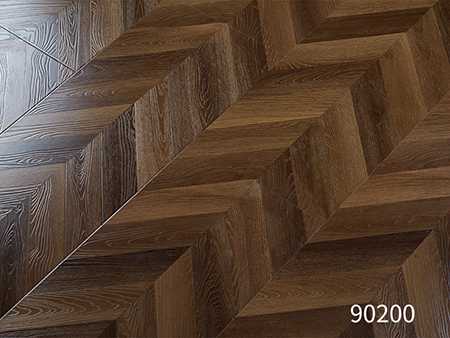Is laminate flooring thin or thick?
 Aug 18, 2020|
Aug 18, 2020| View:558|Share to:
View:558|Share to: Laminate flooring is generally divided into four layers. The first layer is a wear-resistant layer, the main material is alumina, which can be understood as a wear-resistant protective layer on the surface. A high-quality floor will have a higher alumina content per square meter and a higher wear resistance index. Better floors can reach more than 9000 revolutions, which means they meet the floor standards of commercial establishments. The family usually rotates about 6000 times. Yes, the higher the wear resistance, the longer the service life.
The second layer is the decorative layer, namely wood grain decorative paper. This layer determines the color and appearance of the floor. The most important layer for everyday consumers to choose flooring is this layer. In fact, this layer is a sheet with wood grain. It's just a piece of paper. The colors and designs used in domestic and imported products are different, and the thickness is almost the same.

Therefore, since everyone in the first two layers is the same as each other, where does the difference in thickness occur?
The third layer is also called the floor core layer, and the core material is usually a high-density board. The quality of the core layer determines the structural stability, strength, formaldehyde content, moisture content, moisture resistance and other important functions of the floor. It can be said that this layer is the most important for experts.
If this layer uses low-quality medium and low density boards, that is 4-600KG density boards per cubic meter, then even if it has 12mm, it is not a good floor. A small amount of water will deform and will deform after a few years. , The floor is a low-frequency commodity, and future maintenance will cause headaches. If you use a high-quality high-density board with a density of 800 KG/m3 (even if the thickness is only 8mm), you can also use the life of the floor. This is common sense in popular science. The foot feel of the floor is not affected by the thickness. In terms of degree, it is more economical.
Why does the formaldehyde content also depend on the core layer? High-density boards with the same volume are heavier, use less adhesive in them, and naturally emit less formaldehyde. Think about it in reverse. Since we all use low-density boards for you, can we use high-quality glue? Families who use floor heating should be more cautious when choosing a floor. Otherwise, poor-quality flooring will cause a large amount of formaldehyde to be released. Once damage to health is caused, it is difficult to estimate with money. Even if the floor density is the same, the thermal conductivity of a thin floor is better. Therefore, when choosing a floor, do not blindly look at the thickness. It is more important to understand the material of the core layer carefully.
The fourth layer of the floor is the balance layer. This layer is usually thick paper impregnated with a certain strength resin. The weight of the balance paper is usually 120g/㎡.

 +86-13921089219
+86-13921089219 













